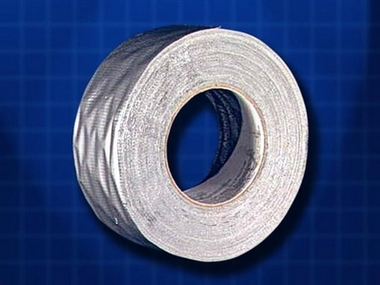Study casts doubt on duct tape wart cure
(AP)Updated: 2007-03-20 09:39
CHICAGO - Duct tape's success at curing warts may have been overstated, according to a new study that raises doubts about the tape's effectiveness as a cheap, painless treatment. The tape supposedly works by irritating the skin and stimulating the body's immune system to attack the virus that causes warts. It earned a place in the medicine cabinet in 2002, when a small study showed it to be effective on children and young adults.
 Duct tape's success at curing warts may have been overstated, according to a new study that raises doubts about the tape's effectiveness as a cheap, painless treatment. [AP]  |
But researchers used transparent duct tape. Only later did they learn that the transparent variety does not contain rubber, unlike the better-known, gray duct tape that appeared to be effective in the 2002 study.
"Whether or not the standard type of duct tape is effective is up in the air," said co-author Dr. Rachel Wenner of the University of Minnesota, who started the new study as a medical student. "Theoretically, the rubber adhesive could somehow stimulate the immune system or irritate the skin in a different manner."
Warts are harmless, stubborn bumps on the hands or feet, caused by a type of papillomavirus. The virus camps out in the skin's upper layers without calling the attention of the body's immune system. Another type of papillomavirus causes cervical cancer, but the strains that cause warts are not cancerous.
Wenner's finding does not surprise Dr. Amy Paller, chairman of the dermatology department at Northwestern University's Feinberg School of Medicine, who was not involved in the new study.
"I have plenty of patients come in having tried duct tape. That's why they come in, because it didn't work," Paller said.
Duct tape may work better in children than in adults, Paller said. Children have strong immune systems and usually have better luck than adults getting rid of warts with any treatment, she said. The median age of subjects in the new study was 54.
Over-the-counter topical treatments containing salicylic acid sometimes work on warts. Doctors use laser therapy or liquid nitrogen against an unyielding wart, or in extreme cases a prescription cream or a virus-fighting injection. Warts usually clear up on their own in about two years, she said.
Warts can spread to other people through towels or skin-to-skin contact. They are extremely common in children, showing up in up to 20 percent in some studies. It's not known how common they are in adults.
In the new study, appearing in the March issue of Archives of Dermatology, researchers followed 80 people with warts. The patients were randomly assigned to cover their wart with either a bandage made of duct tape and moleskin, or a bandage made of moleskin alone.
Transparent duct tape was used so patients and doctors would not be able to guess which bandages contained the duct tape.
The patients were instructed to wear the bandage for a week, remove it after the seventh day and then, on the eighth day, soak the wart in water, and lightly scrape it with an emory board. They repeated the treatment for two months or until the wart disappeared. It was the same regimen as in the 2002 study.
Duct tape showed paltry success in the new study. Eight of the 39 patients (21 percent) who got the duct tape treatment saw their warts disappear. Nine of the 41 patients (22 percent) who got only moleskin saw their warts vanish. There was no significant difference between the two groups.
|
||
|
||
|
|